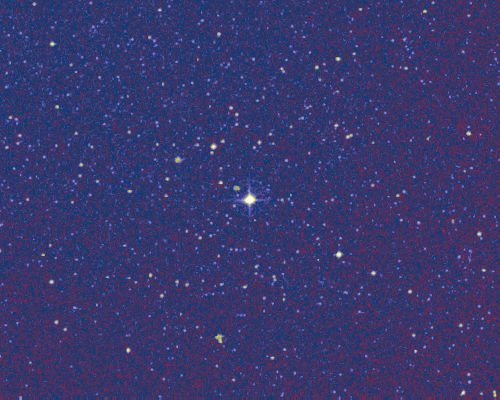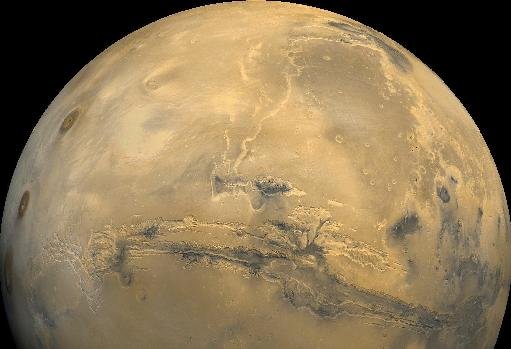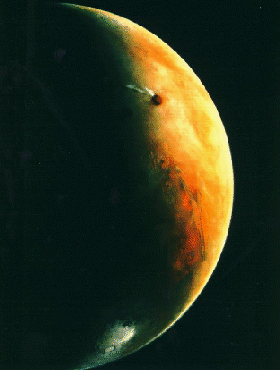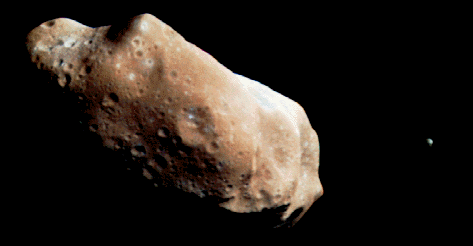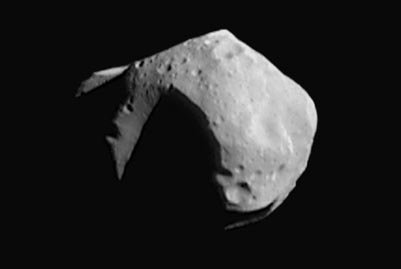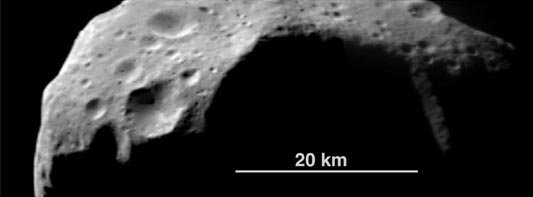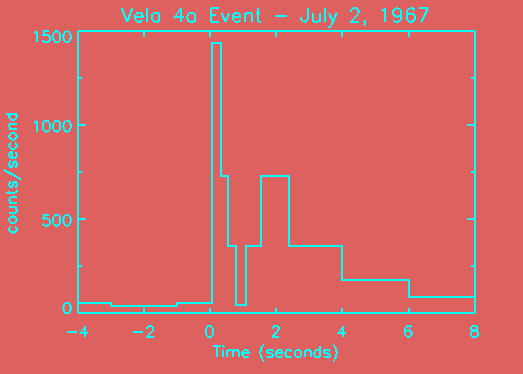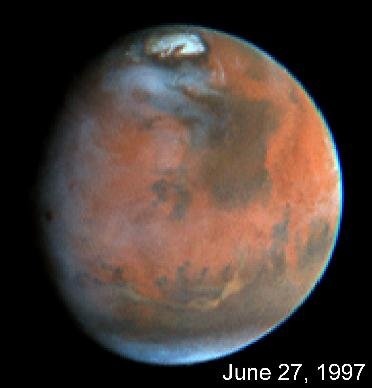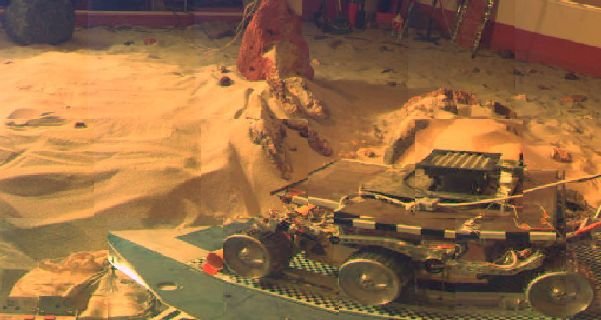NASA APOD #738-746
#738 A Close Encounter of the Stellar Kind June 26, 1997
“The unassuming star centered in this sky view will one day be our next door stellar neighbor. The faint 9th magnitude red dwarf currently 63 light-years away in the constellation Ophiucus was recently discovered to be on a course toward our Solar System. Known in catalogs of nearby stars as Gliese 710 it is predicted to come within 1 light-year of the Sun ... a million years from now. At that distance this star, presently much too faint to be seen by the naked eye, will blaze at 0.6 magnitude - rivaling the apparent brightness of the mighty red giant Antares. Gliese 710 poses no direct collision danger itself although its gravitational influence will likely scatter comets out of the Solar System's reservoir, the Oort cloud, sending some inbound. This future stellar encounter was discovered by researchers Joan Garcia-Sanchez and Robert Preston (JPL), and collaborators while studying stars in the solar neighborhood using data from the Hipparcos Astrometry Satellite. The star field shown is based on the Palomar Digitized Sky Survey and is 1/4 degree wide (about half the diameter of the full moon)."
Copyright: Public domain
#739 Mars: Just The Facts June 27, 1997
“Mars, the freeze-dried planet, orbits 137 million miles from the Sun or at about 1.5 times the Earth-Sun distance. It has two diminutive moons, towering extinct volcanos, an immense canyon system, a thin atmosphere chiefly composed of carbon dioxide (CO2), a frigid average surface temperature of -63 degrees Celsius, and permanent frozen CO2 polar caps which contain some water ice. Mars' surface presently lacks liquid water and has a reddish color because of an abundance of oxidized iron compounds (rust). A small terrestrial planet, fourth from the Sun, Mars has only about 3/8 the surface gravity of Earth. So for example, if you tip the scale at a hefty 200 pounds on Earth you'd be a 75 pound featherweight on Mars. The low martian gravity will be good for NASA's Mars Pathfinder spacecraft scheduled to land on Mars next Friday, July 4th. Using rockets, parachutes, and airbags, Mars Pathfinder will be the first spacecraft to touchdown on the planet since the Viking landers in 1976. Pathfinder is also scheduled to begin the first ever mobile surface exploration by releasing the robot rover, "Mars Sojourner"."
Copyright: Public domain
#740 Barsoom June 28, 1997
“"Yes, I have been to Barsoom again ..." begins John Carter in Edgar Rice Burroughs' 1913 science fiction classic "The Gods of Mars". In Burroughs' novels describing Carter's adventures on Mars, "Barsoom" is the local name for the red planet. Mars continues to inspire Earthdwellers' interests and imagination. Soon it will again be invaded by spacecraft from Earth. This dramatic picture of a crescent Mars was taken by NASA's Viking 2 spacecraft in 1976."
Copyright: Public domain
#741 Ida and Dactyl: Asteroid and Moon June 29, 1997
“This asteroid has a moon! The robot spacecraft Galileo currently exploring the Jovian system, encountered and photographed two asteroids during its long journey to Jupiter. The second asteroid it photographed, Ida, was discovered to have a moon which appears as a small dot to the right of Ida in this picture. The tiny moon, named Dactyl, is about one mile across, while the potato shaped Ida measures about 36 miles long and 14 miles wide. Dactyl is the first moon of an asteroid ever discovered. The names Ida and Dactyl are based on characters in Greek mythology. Do other asteroids have moons?"
Copyright: Public domain
#742 NEAR Mathilde June 30, 1997
“Hey Earth, look what I found! On the way to visiting the asteroid 433 Eros in February 1999, the Near Earth Asteroid Rendezvous (NEAR) spacecraft flew right by another asteroid: 253 Mathilde last Friday. Shown above is one picture from the encounter. Mathilde is a large chunk of rock roughly 60 kilometers across that orbits the Sun between Mars and Jupiter in the main asteroid belt. Mathilde's surface is very dark and heavily cratered. The NEAR pictures of Mathilde received so far indicate that the asteroid has undergone spectacular collisions, one of which created the huge impact basin in the center, which is estimated to be about 10 kilometers deep."
Copyright: Public domain
#743 Asteroid 253 Mathilde:'s Large Craters July 01, 1997
“You're zipping through the Solar System when you pass ... asteroid 253 Mathilde. This actually happened to NASA's NEAR spacecraft just last Friday. The above picture of the previously unresolved asteroid was released just yesterday. Mathilde's large craters and irregular shape indicates that it has undergone huge collisions with other large space rocks in the past. Mathilde has more large craters than asteroids 243 Ida and 951 Gaspra, which were photographed by the Galileo spacecraft now orbiting Jupiter. In the image center is a crater over 20 kilometers across. Asteroids are rare enough so that spacecraft traveling through even the main asteroid belt need not fear colliding with any - let alone one as large as Mathilde."
Copyright: Public domain
#744 Gamma-Ray Burst: A Milestone Explosion July 02, 1997
“Gamma-Ray Bursts (GRBs) were discovered by accident. In fact, GRBs always seem to be where scientists least expect them. Thirty years ago today, satellites first recorded a GRB. The burst data plotted in this histogram show that the count rate of the gamma-ray instrument abruptly jumped indicating a sudden flash of gamma-rays. The Vela satellites that detected this and other GRBs were developed to test technology to monitor nuclear test ban treaties. With on board sensors they watched for brief X-ray and gamma-ray flashes, the telltale signs of nuclear explosions from the vicinity of the Earth. As intended, the Velas found flashes of gamma-rays - but not from nuclear detonations near Earth. Instead, the flashes came from deep space! Dubbed "cosmic gamma-ray bursts" their origin was then unknown and is still controversial. However, the gamma-ray surprises were not over. Exploring the high-energy sky nearly 25 years later, the orbiting Compton Observatory's Burst and Transient Source Experiment (BATSE), intentionally designed to detect cosmic gamma-ray bursts, was searching for clues to the GRB mystery. But the second burst BATSE recorded did not come from deep space. It came from near the Earth! Don't worry, these terrestrial GRBs are not nuclear bombs exploding. They are a new phenomenon now thought to be related to a recently discovered type of high altitude lightning. Exploring new horizons continues to yield unexpected results."
Copyright: Public domain
#745 Mars: A Journey's End July 03, 1997
“Mars Pathfinder is nearing the end of its 7 month journey. The robot spacecraft is scheduled to use parachutes, rockets, and airbags to "bouncedown" on the red planet tomorrow - July 4th. This Hubble Space Telescope image of Mars was taken a few days ago to check on the weather. The pathfinder landing site, on the ancient floodplain Ares Vallis, is just right of center - 500 miles southeast of where Viking 1 landed in 1976. Along with the martian north polar cap, some water ice clouds are visible in both the northern and southern hemisphere. About 600 miles south of the landing site a dust storm can be seen as a brownish ribbon stretching through the the Valles Marineris, a continent sized canyon system. Fortunately, the dust storm is not expected to seriously affect operations at the landing site."
Copyright: Public domain
#746 A Landing On Mars July 04, 1997
“Today, July 4th, at about 10:00 AM Pacific Daylight Time (PDT), the Mars Pathfinder spacecraft will land on Mars. Ninety minutes before reaching the surface Pathfinder will begin a flurry of activity. The robot spacecraft is scheduled to vent cooling fluid, jettison its cruise stage, decelerate at 20 gees on atmospheric entry, deploy a 24 foot parachute, jettison its heat shield, slide down a 60 foot bridle, fire solid fuel braking rockets, deploy a cocoon of airbags, separate from the bridle, impact the martian surface, bounce a few times (traveling about 300 - 600 feet between bounces), settle on the surface, deflate the airbags, right itself, deploy its landing petals, and resume communication with planet Earth, all under the autonomous control of the onboard computer. If all goes well, at about 4:30 PM PDT the Pathfinder's camera "IMP" will spring into action recording frame by frame a panoramic view of the surface. Dubbed "Mission Success" the mosaic above is a laboratory simulation of the planned first image sequence to be downlinked from the surface of Mars."
Copyright: Public domain
Upvote! Resteem! Comment! As you like it! Thank you for attention!
